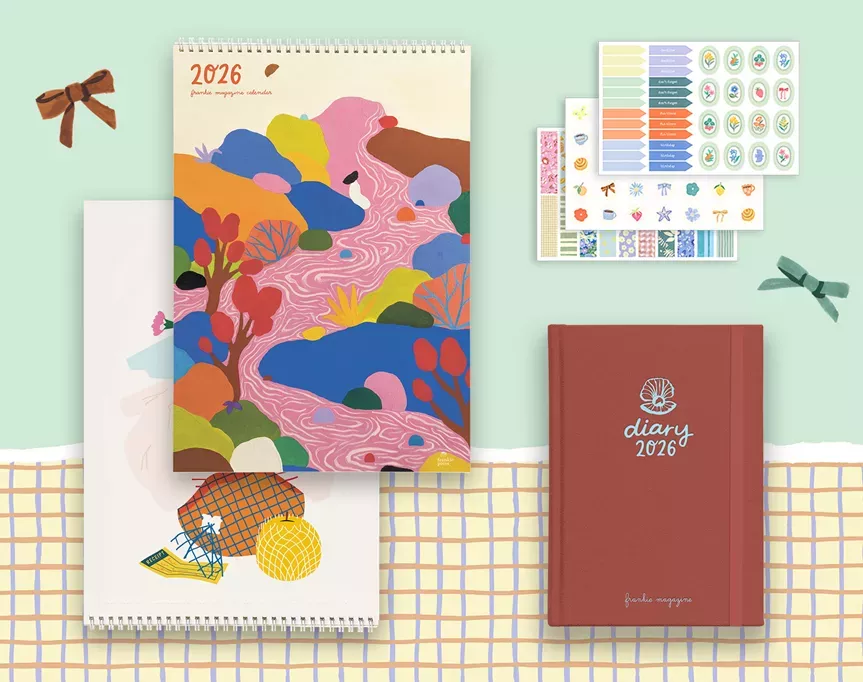plant trends around the world
We ask some international folk about the plants they keep.
 snaps by Gabriella Odh
snaps by Gabriella Odh
GABRIELLA ODH IS A FLORAL ARTIST AT HAPPY FLEURS IN HÖGANÄS, SWEDEN
What’s the growing climate like there? Sweden is an elongated country, so it differs a lot from the northern parts to the southern part. I’m from the north, where four to six months are usually dark and snowy (many outdoor plants need to be stored for the winter). Nowadays I live in the southernmost parts. I can grow things easily – everything from Mediterranean plants and trees to vegetables, perennials and annual summer flowers. We still need to store some plants over winter, but for shorter periods.
What are those flowers often displayed in windowsills? Pelargoniums – they are the most popular plant and have been for a really long time! Geraniums have been around as houseplants for a century. Swedish gardeners produce about 10 million geraniums, and the interest is greater now more than ever. Older and experienced gardeners, as well as younger people, exchange small cuttings, discover new varieties and enjoy the diversity of them. I love the wild ones, like sidoides, and the scented ones like tomentosum and, of course, Mårbacka.
What are some popular plants in Sweden? I think Swedes have quite an unusual amount of plants indoors – in windowsills, but also larger plants as interior decoration. A lot of green plants like ferns, monsteras, philodendrons, begonias, ficus, alocasia, hoya, coleus. On balconies you often see colourful summer flowers. The interest in having more than just flowers on balconies has also increased – people grow potatoes, tomatoes, herbs, chillies. A lot of yards have arranged flowerbeds with rhododendron, wallflowers, ferns and flowering perennials such as peonies, poppies, roses and autumn anemones.
What’s the biggest gardening trend right now? Summer flowers – the dahlias, cosmos, zinnia, lathyrus, sunflowers. There is a trend to grow them in open fields and to sell them in small stands along the road or for self-picking. People are crazy about it here – they can drive far to get some! I think people have a bigger interest in allotments too. They’re more aware of the climate, more aware of what makes us feel good. Self-sufficiency has become relevant. Gardening is rewarding for a lot of people in the city. snaps by Soilboy
snaps by Soilboy
ANGELINE GOH AND IVAN WOO ARE THE OWNERS OF SOILBOY, A PLANT SHOP IN SINGAPORE
What’s the growing climate like there? Singapore’s tropical climate is defined by high humidity, frequent rainfall and consistently warm temperatures all year round. We do not have four seasons here. These conditions create an ideal environment for growing a wide range of plants both indoors and outdoors.
Do Singaporeans typically have a garden at home? A typical Singaporean home is either an apartment or a landed property. Traditional gardens are mainly found in landed properties, typically along the porch or in the yard. Most Singaporeans live in high-rise apartments and primarily have greenery in the form of potted plants. However, some are fortunate enough to have a balcony where they can create a garden set-up. We developed a design solution to bring nature into indoor spaces and balconies – we built planter boxes with practical features like drainage and water access. Our goal is to make it simple for people to incorporate nature into their homes, to soften environments and create a calming atmosphere.
What’s behind the popularity of caudex plants across Asia? Caudex plants are drought-tolerant and low-maintenance. Even if their branches are broken, they can often regrow, unlike most plants. One of our favourites is Stephania erecta, with its adorable round leaves and a caudex that resembles a potato. In contrast, bonsai plants symbolise living art and embody natural beauty, philosophical ideas and cultural traditions within a manageable and aesthetically pleasing form. Caring for them involves mindful maintenance, providing an escape from our bustling city lifestyle.
What plants are popular right now? Everfresh tree, olive tree, bottle tree, Stephania erecta, Stephania suberosa, Phyllanthus mirabilis, feroniella bonsai, ficus Audrey, asparagus fern, pachira ‘Milky Way’. For Soilboy, we select each plant for its unique characteristics, such as intriguing leaf shapes and distinctive trunks or stems. MONAI MCCULLOUGH IS A PLANT STYLIST LIVING IN AMSTERDAM
MONAI MCCULLOUGH IS A PLANT STYLIST LIVING IN AMSTERDAM
How do plants show up in daily life there? The Netherlands in general is close to the horticulture industry – it’s one of their main exports. We export the most bulbs in the world, so there are lots of tulips, lots of early spring flowers planted, if not on balconies then sometimes on the street. You can get plants in grocery stores anywhere; it’s very incorporated into life. Because of the industry here, plants and flowers are also lower priced. Cut flowers are just everywhere. A lot of focus is placed on ornamental flowers that are big, bold and colourful.
Are there communal veggie patches around? Volkstuinen – allotments – are situated all over Amsterdam. They have been around for a long time; the demand has always been high since they started doing them. They’re really beautiful, but it’s super rare to get them. Thousands of people apply every year and maybe a few dozen actually get one.
What’s the story behind the overflowing pot plants in front of canal houses? We have overtourism, so at first placing lots of plants and pots outside deterred people from sitting on your steps and crashing on your benches. It’s also for privacy. And it’s just super beautiful, creating these lush spaces in front of your home.
This is an edited extract from our one-off gardening mag, Evergreen. To read the rest of the story, which features plenty more plant people, get your mitts on a copy by swinging past the frankie shop or visiting one of our lovely stockists.

.jpg&q=80&h=682&w=863&c=1&s=1)












.jpg&q=80&w=316&c=1&s=1)













.jpg&q=80&w=316&c=1&s=1)










